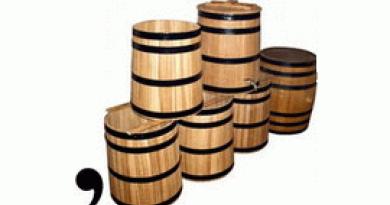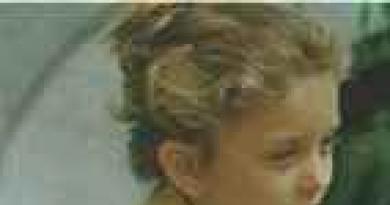The seventh letter of the Russian alphabet is full of paradoxes! Judge for yourself:
In shape it looks like the letter Ee, but in content it is actually the letter Oo (only soft - yo).
Another paradox of the letter Yoyo is that it is the only letter of the Russian alphabet that can be replaced by another letter in writing.
The third paradox (or departure from general rule) is that the letter e is always stressed! It is known that in Russian there is no fixed stress, like, say, in Polish or French. But in words with the letter e the emphasis falls only on it!
Please note - in the texts of church prayers and in the Church Slavonic language there is no letter Yoyo! (Just listen to how “Our Father” sounds from the lips of a priest). Why? Yes, all because the sacred texts were written long before this most paradoxical letter of the alphabet was introduced into the Russian language. The parents of the letter Yoyo are considered to be Princess Ekaterina Dashkova and the historian N. Karamzin, and her birthday falls on November 29, 1783.
Why did they choose the letter Ee as the basis for writing the letter Yoyo, and not Oo?
It would seem that it would be more logical to convey the sound е not through e, but through “o”. Why did the authors of the letter E choose E? Because in the Russian language it is the sound e that is transformed into the sound е (and vice versa), fir-tree - spruce, chelka - slit, honey - honey... And never into the sound o!
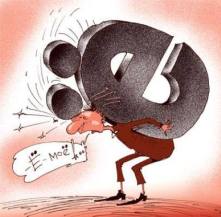
From the first days of its existence, the new letter had both supporters and opponents. Current apologists for the letter e literally demand its widespread use in writing. Especially “stubborn” and uncompromising letter-eaters are called “yofikators”. These comrades raised the letter E to the banner of patriotism and declared all opponents of the letter E to be Russophobes and traitors to the interests of the Russian language and Russians in general. In turn, opponents of the strictly mandatory use of the letter Ёё are trying to give “reasonable” arguments, such as creating additional “challenges” for schoolchildren and teachers. And this “tug of war” between supporters and opponents of the letter e continues throughout the 230 years of its existence.
Arguments FOR the mandatory spelling of Ё:
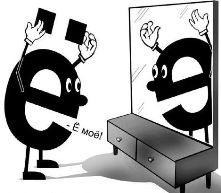
Mandatory use of the letter ё
Arguments against mandatory writing Yo
obvious difficulties in reprinting the works of Russian writers of the 18th and 19th centuries. For example, no one can say with certainty exactly how the words sounded during Pushkin’s time in his poem “Poltava”:
We are pressing the Swedes, army after army;
The glory of their banners is darkening,
And fight God with grace
Our every step is captured.
I know e n - captured e n or know e n - captured e n?
IN real life the truth is always in the middle between polar points of view. This “golden mean” was a compromise agreement reached by linguists and formalized in the “Rules for Spelling and Punctuation of the Russian Language.”
The golden rule of writing the letter E
- If the appearance of the word is distorted due to failure to place two dots, we write the letter e.
- If not writing ё does not lead to errors when reading, it is permissible to replace ё with e.
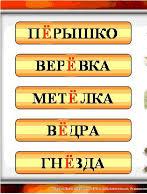
This article describes how, by the willful decision of I. Stalin (the main specialist in linguistics in the USSR!) in 1942, the use of Yoyo was introduced in all printed publications. But during the life of the leader of the peoples, in 1952, the 2nd edition of the “Handbook of Spelling and Punctuation for Print Workers” was published. The book clearly stated:
- when it is necessary to prevent the incorrect reading of a word, for example: we recognize as opposed to learn; everything is different from everything, a bucket is different from a bucket; perfect (participle) as opposed to perfect (adjective), heaven as opposed to palate.
- when it is necessary to emphasize the correct sound of a little-known word, for example: Olekma river; or having a common mispronunciation: surfing, slit, and including to indicate the correct stress fable, brought, carried away, condemned, newborn.
- in proper names – surnames, geographical names:
Konenkov, Neyolova, Catherine Deneuve, Schrödinger, Richelieu, Depardieu, Dezhnev, Koshelev, Chebyshev, Veshenskaya. - in dictionaries and spelling reference books, in books for children of primary school age, in textbooks for non-Russians and in some types of specialized literature.
Thus:
Authors who wish to “efect” their own books are given the right to do so.
- the requirement for mandatory ё in heading words in dictionaries and encyclopedias, in publications for those who are just mastering reading skills or studying Russian as a second language remains;
- problems of bearers of given names, patronymics, and surnames in which ё is used are solved;
- provides guidance on the correct pronunciation of words that cause reading difficulties
On the other side:
Russian writing will not be overloaded with diacritics that are inconvenient for writers and readers;
- classic texts will be saved from “modernization”, and schoolchildren will be saved from an additional “stumbling block” in Russian language lessons.
Quick to remember
The use of the letter е is mandatory in books for children younger age(including textbooks for schoolchildren junior classes), in textbooks for foreigners, in reference and specialized literature.

In ordinary printed texts, ё is written in cases where a word can be misread, when it is necessary to indicate the correct pronunciation of a rare word or to prevent a speech error. The letter ё should also be written in proper names.
In other cases, the use of ё in writing is optional.
P.S.
Where did diacritics come from in European alphabets? Western European alphabets are based on Latin script. Roman Latin did not have superscripts. But Latin taken in its “naked” form did not convey all the shades of sound national languages. The solution was found partly in the so-called diacritics, that is, dots, caps, lines above the main letters.
Let your friends know about it too:
Similar materials
Notes for the Russian literacy lesson "Letter Yoyo" 1st grade
20.08.2015 1146 166 Manapova Saltanat TemirbolatovnaGoal: to introduce children to the new letter E; teach to read it in words and syllables; improve children's reading techniques; develop oral speech, logic and intelligence.
cultivate love for native language, its diversity, secrets and features, interest in reading.
Equipment: image of a hedgehog; image of the letter E; tables and applications for speed reading
Lesson progress:
1. Organizational moment.
- Hello, guys, sit down! Today we have a difficult lesson with you. We will try to discover another secret of the Russian language associated with a letter... And we will find out which one later.
Let's get into a working mood, you have a lot of hard work to do today
2. Work on speech development.
To learn the secrets of the new letter, we need an assistant, and he will appear if you guess my riddle:
Angry touchy lives in the wilderness of the forest;
There are many needles - a lot, but not a single thread.
-Who is this? (Hedgehog). Well done, and here he himself has appeared. (Showing a picture of a hedgehog)
- Let's call the hedgehog differently (hedgehog, hedgehog, hedgehog, hedgehog, hedgehog...)
- Do you like this hedgehog? Let's describe it, create a verbal portrait. Just an agreement: we will try to compose whole sentences, not individual words. Let's start with the face... (Description of children). Now let's move on to the hedgehog's body, how would you describe it? (Children's answers). And look at the legs of the hedgehog... (Description of children).
3. Work on the topic. Introducing the new letter E.
- Well done, guys! The hedgehog really liked your portrait. For this he brought you a new letter on needles. What letter is this if the assistant is a hedgehog? (Yo).
- Let's say it three times and determine what it is. (vowel)
- How many sounds does it consist of? (Of two [Y’] and [O]).
- What feature does the letter E have? What is its role if it comes after a consonant?
- Now we need to place our letter in the Bukvinsk house. Think about what floor, what letters will we put her on? (To vowels, with yotic “e”).
And under what letter? (“o”) Why? (The letter “е” also has a sound [o])
-Fine! Now let’s make gifts for our new home, remember the words with the letter e. (Christmas tree, ruff, gun, honey, ice...).
- And the second gift for our birthday girl will be a game: I will name the words, and you will clap your hands only when the word begins with the letter E.
Get ready! We started: Christmas tree, blackberry, nimble, raccoon, ruff, spruce, hedgehog, bright, spinning apple.
- Well, I think the letter E was pleased with your work. Now let's practice reading syllables and words with this letter.
4. Warm-up (Work on articulation).
We read the columns written on the board in unison. The first time we read the column slowly, clearly pronounce the sounds and pay attention to the softness of the consonants, the second time - faster, and the third time - quickly, moving along the column first down and then up. Then we move on to the next column
THO NOS - NOS GRE
EVERYTHING IS EVIL
NYO ROV - ROAR SVYO
SÖ MOD - HONEY PLE
RYO VOL - VOL GNE
LE MOL - CHALK ZVE
5. Speed reading.
Now it's time for a minute of speed reading. Pick up appendix No. 3 and find the second column. We got ready and started. (After a minute) Stop! Now calculate your result.
6. Physical education minute.
7. Work on speech development.
We rested a little, now it’s time to get to work. And then the hedgehog was already tired of waiting for you and came up with an idea next task. He very often heard different words from people and always wanted to ask: why do we people say that?
And his first word: shrink. Are we really turning into hedgehogs?
- Let's speculate, when are we cringing? (It’s cold, scary, we’re hiding).
- Try to imitate this pose. (Children show).
- Doesn’t she remind you of anyone? (A hedgehog does this out of fear or cold).
- That's why people say that.
- Well, you’ve dealt with the first question, listen to the second: why do we call one forest bush a blackberry? What is this, a berry for hedgehogs? (Children's answers that the blackberry bush has needles, like a hedgehog, for this similarity they gave it such a name)
- Well done! And the second question was overcome! Let's move on to the third, most difficult one. People often say: keep a tight rein on things. What kind of mittens are we talking about? Have you, children, heard such an expression? (No)
- Well, then I’ll have to explain to the hedgehog what kind of mittens these are, and at the same time you’ll listen. In fact, there are no tight reins, but we use this expression if we need to call someone to order, to discipline them. Let me give you an example: in our class there are children who do not try very hard to write well and I scold them for this, I monitor their work more closely, I assign additional tasks, i.e. I keep it with a tight rein. Maybe you can give some examples yourself now?
(Children's stories).
Finally, we coped with the hedgehog’s tricky questions, and for this he prepared for us the solution to another secret of the letter ё, the fairy tale “Why is E always stressed.” From this fairy tale you will learn where the two bumps at the top of the letter e came from - oh, no! - two points.
One day the letter E ran into the forest. Suddenly a strong wind blew, the letter E became scared, and she hid under a spruce tree. The spruce swayed from the wind, and two cones fell on the letter E, which caused cones to form on E’s head. From this it turned into another - the letter E. After this incident, the letter E is always stressed.
- Did you like the hedgehog's fairy tale? But it’s not for nothing that we often say: a fairy tale is a lie, but there is a hint in it, a lesson for good fellows. What lesson did you learn from this fairy tale? (The letter е is always stressed).
- Let's check it out! Read these words in unison, they contain the letter e
(words printed on the board)
CHRISTMAS TREE
YOURS
HEDGEHOG
STUMP
ANIMAL
KITTY
FUNNY
Now we will read each word separately and determine the stressed vowel. (We do it) Well, are you convinced? Remember: the emphasis always falls on Yo.
8. Summary. So the lesson comes to an end. Let's repeat what letter we met today? ("е")
- How many sounds does it consist of? ([th’],[o])
- What letter is this, vowel or consonant? (vowel)
- What other interesting things did you remember about the letter E? (makes the preceding consonant soft, always stressed).
- Who helped us in our work? (hedgehog) Let's thank him!
Download material
See the downloadable file for the full text of the material.
The page contains only a fragment of the material.
WHAT IS THE LETTER LIKE?
E and S are sisters,
It's not easy to tell the sisters apart.
But the letter Ë has two dots,
Like a ladder of nails.(V. Stepanov)
The letter E took a breath.
How immediately at her
A couple of chicks fluttered -
The result is the letter Ë.(E. Tarlapan)
Barbed letter
Starting with the letter Ë you
you name it
Three words: Christmas tree,
hedgehog and ruff,
And everything is terrible
prickly(A. Shibaev)
LEARNING BY PLAYING
(Material for game exercises)
Sound
Phonetic exercise.
What does a bear love most in the world? (Honey.)
Find out the sound.
Stand up (clap) if the word begins with e. (Christmas tree, blackberry, nimble, raccoon, brush, spruce, song, hedgehog, bright, spinning top, apple.)
Who's attentive?
Remember the words with e that you will encounter in a fairy tale.
Hedgehog and brush
All the animals went to bed for the winter, and the hedgehogs lay down in a hole under the tree. But the little hedgehog can't sleep.
- Mom! Why are we just sleeping and sleeping... Can I go to my friend the brush?
- What are you talking about? You'll still freeze. Sleep!
The hedgehog lay there, fidgeted, fidgeted, waited until his mother fell asleep, and crawled out of the hole. He got out and was surprised. Everything is white and white, and the snow on the Christmas trees sometimes looks like a chicken, sometimes like a hedgehog, and even like a brush!
- Oh, how great! But the brush sits in the river and doesn’t see any of this!
He ran to the river, and instead of the river there was only ice, and a hole in the middle.
- Ruff, ah ruff! What did I see! Well, ruff!
The hedgehog called for a long time, he was completely frozen. Finally a sleepy ruff emerged:
- Well, why are you shouting, won’t you let me sleep?
-Are you also sleeping?
- Yes, yes. Until spring. You should go too, huh?
The hedgehog trotted home, into a warm hole. I froze all over, ate honey so as not to get sick, and went to bed until spring.(G. Yudin)
Finish the word.
Fur coat - needles.
It will curl up - prickly.
You can't take it with your hand.
Who is this? ... (L.)
Well, the dress:
All needles.
They wear it forever... (Elki).
Prickly, but not a hedgehog.
Who is this? ... (Ërsh.)
The gray hedgehog was very quiet
And the hedgehog too
And they had a child -
Very quiet... (hedgehog).
Good-natured, businesslike.
All covered with needles.
Can you hear the patter of nimble feet?
This is our friend... (hedgehog).
They grew up across the river,
They brought them to the holiday.
There are needles on the branches.
What is this? ... (Elki.)
The whole family goes for a walk
At night along the paths
Hedgehog father, hedgehog mother
And the child... (hedgehog).
Syllable auction.
Name not objects, but actions. Yes... (yet); by...(-et); beret); lives...(-vet); not...(-set); ve...(-zet); and...(-children).
Impact - non-impact. Let's write a fairy tale.
About the Christmas tree
A Christmas tree grew in the forest. She had three girlfriends. Who are they, guess for yourself. Their name has three syllables. (Birch, aspen, rowan.)
And then a holiday came in the forest, the girlfriends brought gifts to the Christmas tree. Birch gave me a toy whose name has two syllables, the first being stressed. (Doll.) Rowan gave a cheerful wooden man. (What is his name? How many syllables are in this word? Name the stressed one.) Osinka thought for a long time about what to give to her friend, and then decided to give her... What?
(The teacher shows the children the book “Fairy Tales”.)
The Christmas tree was happy and thanked her friends. What did she say? (The teacher writes the word thank you on the board.) Say this word. Thank you sounds so interesting, like a little song. Repeat it one more time and listen to where the emphasis is in this word.
Letter
.
The word has crumbled.
All words used to begin with Ë: KIZHË, SHËR, CHAKOLË. (Answer: hedgehog, ruff, Christmas tree.)
Fairy tale “Why Ë is always shock”
From this fairy tale you will learn where the two bumps at the top of the letter Ë came from - oh, no! - two points.
One day the letter E ran into the forest. Suddenly a strong wind blew and the trees swayed. The letter E became scared and hid under a spruce tree. The spruce tree also swayed from the wind, and two cones fell on the letter E, which caused bumps to form on E’s head. From this it turned into another letter - the letter Ë. This, it turns out, is why Yo is always a drummer.
Transforming words. Ruffs are a ruff, hedgehogs are a hedgehog, spruces are a Christmas tree.

